First, you were worried about feeding your package. You got through that, and your colony grew. Then you worried about mites. You treated the hive and got through that as well.
The temperature started to drop, and you were wary about winter (learn what to do to winterize your beehive). Would your ladies make it, or would they become another statistic? Spring couldn’t come soon enough, and you were ecstatic that the bees made it through.
You’re getting confident now, almost cocky. You approach the hive with a pep in your step and a song in your heart. You’ve been keeping an eye on the hive from the outside and noticed that the ladies have been busy.
Now, your plan is to pop open the hive to confirm what you already know: that the colony is thriving.
This time, the welcoming party isn’t as friendly as you remember. In fact, when you open the hive, they seem very eager to be rid of you…
The hive also doesn’t seem as vibrant as you had expected. The ladies aren’t as many as you thought they would be.
Sure enough, they are storing nectar, but you can’t seem to find any brood. Could it be that your beehive is queenless?
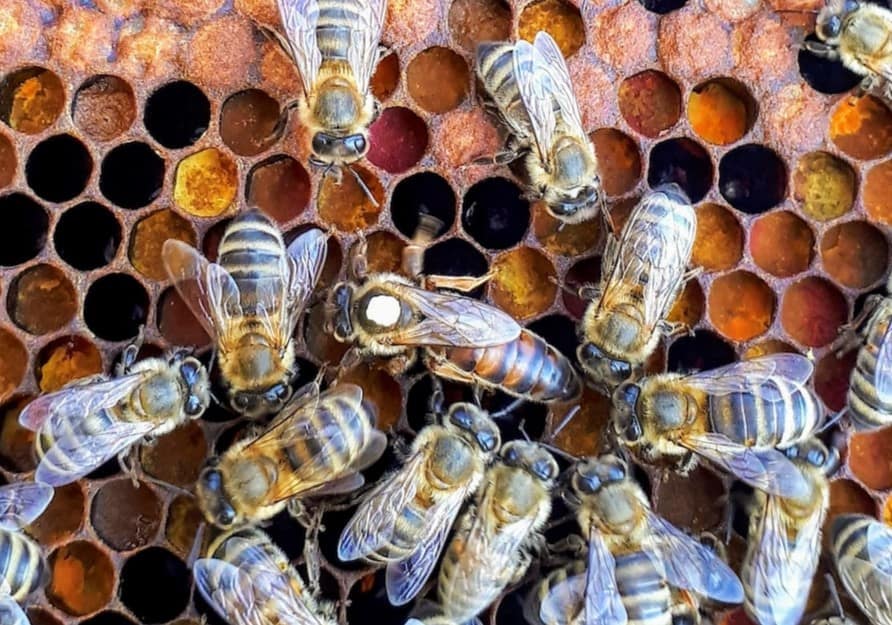
5 Signs of a Queenless Beehive
How do you know your beehive is queenless? There are five things signs you can look for to confirm your suspicion:
- Missing eggs and brood
- A significant drop in the population
- Honey and pollen where brood should be
- Multiple eggs in a cell
- An increased number of drones
1. Missing Brood and Eggs
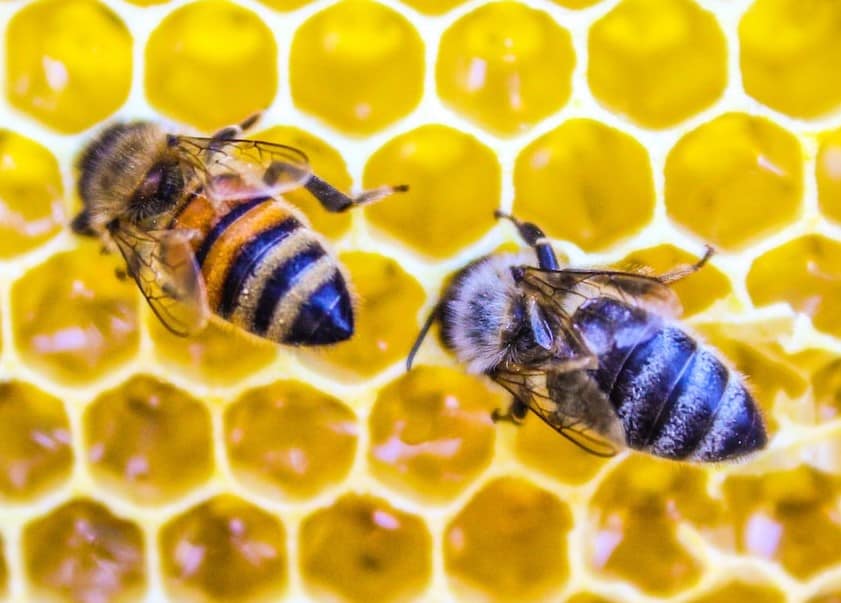
The queen bee has a monopoly on the egg-laying industry in the hive. She does not delegate that duty. Therefore, if the queen bee is missing, you have a queenless beehive, and there’s no one picking up the slack.
If you catch the colony in the early stages of queenlessness, you can estimate how long it’s been depending on the stage of development of the brood present in the hive.
Depending on the time of the year, the queen should be laying eggs every day. That means that during the nectar flows, there should be a brood at all stages of development present at any one time in the hive.
The presence of fresh eggs shows that the queen bee is probably alive and well. In three days’ time, you will have hatched queen cells. With brood, things get a little more complicated.
Bee larva remains uncapped for about 6 days after hatching. Once you have a capped brood, the larva pupates in a cocoon it has spun for itself and remains capped for about 11 days.
So let’s do the math. If the open brood is present, then the queen was definitely alive about 9 days prior to the day of inspection. With time you will be able to estimate the age of the larvae from their size.
That will help you get a more accurate picture of the situation. If the brood is capped, then the pupa within could be 11 days old or just about to emerge at 21 days.
So, all you know for sure is that at least 3 weeks before, the queen roamed the combs of the hive.
2. A Significant Drop in Population
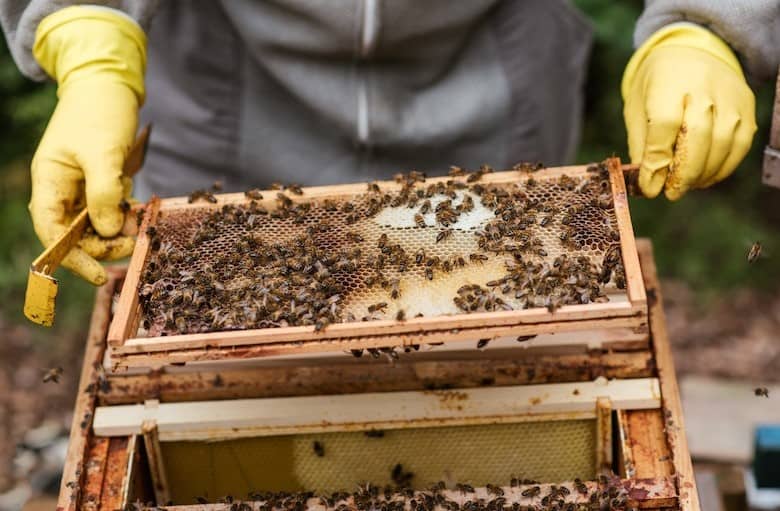
The workforce of the hive is in constant need of replacement.
Worker bees drop dead from exhaustion every day. Others wind up as the main course for other birds, reptiles, or pesky insects such as ants.
Sometimes, some of the worker bees will lose their temper, sting someone, and they won’t make it home for dinner.
Without a queen, the remaining bees will simply die off. The population in the hive will slowly shrink as more and more bees die.
3. Honey and Pollen Where the Brood Should Be
The life of worker bees begins as nurse bees. As they grow into adult bees, they graduate to guard duty and finally explore the world as a food hunter until they drop dead.
So, imagine that soon after you emerge from your cell as a young adult, you find your position redundant. There are no babies to nurse in the brood nest.
Ah, well, you’re a fast learner, so you skip that grade and move on to foraging. Now there are a lot of workers going out to collect pollen and nectar, and it all has to go somewhere. Without the need to preserve space for eggs and broods, all available space can be used for honey stores and food storage.
When there’s a queen bee, you’ll notice that all the queen’s brood falls in the center of the drawn comb and is flanked by pollen bread and honey. As the young brood matures and emerges, sometimes the worker bee chooses to use this new space to store honey, leaving no room for the brood.

4. Multiple Eggs in a Cell
The queen bee is a specialist when it comes to the egg-laying game. The laying queen knows when to lay, where to lay, and how many eggs to lay.
When her daughters take it upon themselves to usurp her duties in her absence, they lack finesse. Mistakenly, they’ll lay eggs everywhere.
You’ll find these little treasures on the pollen bread and even lay several eggs in one cell.
Once you spot this, you know your colony is definitely in trouble, as you may have a queenless beehive.
5. Increased Number of Drones
Drones usually constitute less than a fifth of the population of the hive. Once the brothers start to look like they are running the hive by sheer numbers, one of two things happens.
Either the queen is old and has run out of sperm to fertilize her eggs, or you have egg-laying workers. In either scenario, a new emergency queen is needed urgently.
Queenless Beehive Behavior
Laying workers
Though workers are capable of laying eggs, they do not mate. That makes them incapable of populating the hive with other workers.
When the queen is alive and well, the worker bees go about their duties as usual, and it was previously believed that her pheromone suppressed the impulse to lay eggs.
Now we know that it is, in fact, a worker brood that produces the pheromone.
As long as larvae from fertilized eggs are present in the hive, the workers will not take up egg-laying as a hobby.
Once the workers start laying eggs, they get very hostile toward you and any queen you may think to introduce.
In most cases, the beekeeper will get rid of the colony when it gets to this point. They just shake out the bees and start with a new colony.
Aggression
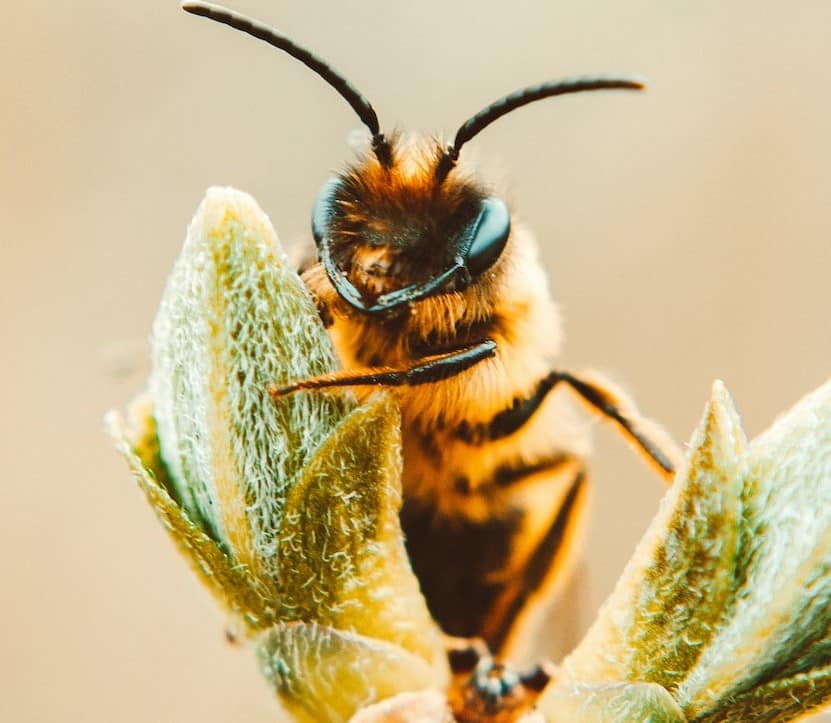
Queenless beehives are notoriously testy.
Some experts say that they can hear a high-pitched whine followed by a low hum when they do hive inspections. It’s an easy sign to miss but a form of aggression that is less subtle.
If you’ve previously enjoyed a timid hive, you’ll notice more bees begin to pour out of the hive to defend it. Where you previously managed a visit wearing shorts and a t-shirt, you find yourself in need of
It’s important to note that aggression alone doesn’t necessarily mean your hive is queenless. This, coupled with other signs, such as missing brood, will help you diagnose your queenless colony early.
4 Options for Dealing with a Queenless Beehive and Getting Queenright
Queenless hives should not be taken lightly. Luckily, you have several options to remedy the situation. Here, we discuss what you can do as a beekeeper when you find your hive is queenless.
1. Give Them Some Open Worker Brood
As a beginner, it is advised that you start off your beekeeping project with two colonies rather than one. Just like you may need to borrow a cup of sugar from your neighbor, you may need to broker a brood loan for a queenless hive.
Workers are designed to care for their sisters, and nature has ensured that they stay on task by the production of pheromones. It’s the human equivalent of chocolate.
It calms the ladies down, suppresses their need to lay, and with any luck, they may make a new queen from the brood you introduce. You may need to keep adding every 3-5 days for a couple of weeks to ensure that the workers are back on track.
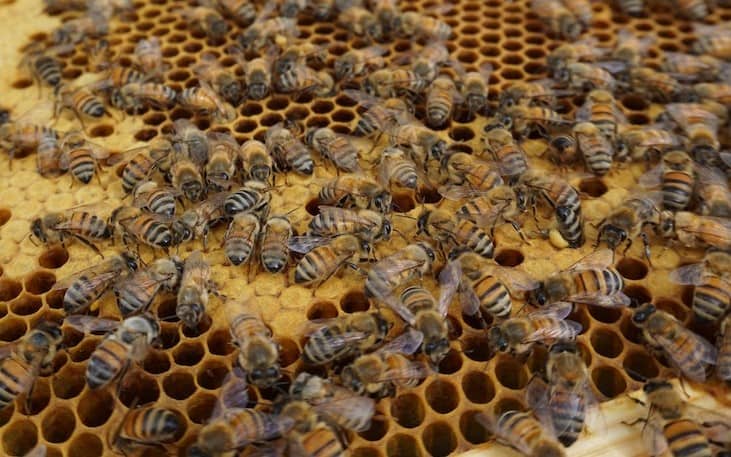
2. Give them a New Queen
As you gain experience, it would be good practice for you to raise a few queens of your own to resolve such problems. For now, if you do not have an available queen, you may need to purchase a replacement queen.
Queen bees are available for purchase online. They are usually shipped in
It takes about two weeks for emergency queens to go from larvae to adults. She then needs about a week to get ready to take her first mating flight.
Depending on how that goes, she may need a few more dates before she’s ready to settle down. She then needs to get her body ready for the last job she’ll ever have, which is laying eggs.
This takes another two days or so, which means you’ll have to wait almost a month before you know if the colony has successfully installed a new queen.
Queens can be shipped overnight, and you can ensure that you purchase one that bears the genetic traits that you desire.
If you have a laying worker colony and the workers have already started laying, they may kill the new queen that you choose to introduce. This solution works best if you have caught the problem early.
Test the colony by placing the caged queen inside the hive and observing how they behave. If they are eager to have a queen, they’ll rapidly fan their wings to spread her pheromone across the hive.
If you notice them biting and stinging the cage, get that queen out of there.
3. Combine the Queenless beehive with a Queenright Nuc
Once again, you need to be cautious about this course of action.
Queenless colonies can be stubborn and need some time to get used to a queen’s smell.
For that reason, ensure that there is a mesh between the nuc and the queenless colony to begin with.
Once all the bees have had a few days to acclimate themselves to the scent of the queen, then you can remove the barrier.
4. Destroy the Colony
Sometimes, the colony isn’t worth the work you have to go through to get a hive queenright.
This is especially true if you find that laying workers are present in the hive. If there’s honey in the hive, pass it on to another colony, take the hive to the periphery of your apiary, and simply shake out the bees.
Some will seek asylum in some of the other hives nearby. Most of them will die, but that was bound to happen anyway. Take your hive and start over.
The Amount of Time That a Beehive Can Be Queenless
Many beekeepers finding their hive in this situation want to know: how long can a hive be queenless? In truth, every colony is different, so this is a question with many answers.
Did she die of old age? If so, your hive may not have as much time as others. That is because old queens sometimes run out of sperm. This means that she lay unfertilized eggs, and queens cannot be developed from them.
If this trend goes unnoticed, then by the time your own queen dies, the workers are unable to form supersedure cells and make a new queen from the queen’s brood available.
On the other hand, if you accidentally crushed her while she was still in her prime, the workers will be able to make a new queen from the existing brood, and you’ll have a prolific royal in a month or so. What matters is early detection.

What a Queenless Beehive Looks Like
The following are possible scenarios you can see when you open a queenless hive.
However, spotting one of these characteristics does not guarantee that the hive is queenless, but it does call for further investigation.
Too Much Pollen and Honey Where Brood Should be
The girls are wired to keep busy, and they just don’t know when to stop without a queen.
Drone Domination
A queen laying only unfertilized eggs is likely to be on her way to the big hive in the sky. Furthermore, laying workers will add to the drone numbers as well.
Should you spot a hive with a suspiciously large number of drones, you definitely need to investigate further.
Brood Pattern
As mentioned before, laying workers have no method to their madness, so you won’t have your usual cluster of brood flanked by food. The brood will be everywhere.
That said, sometimes failing queens can also cause spotty brood patterns, so you will need to investigate further to see what the cause of your problem is. The risk here is if you diagnose queenlessness in a queenright hive and try to requeen, the colony will kill the new queen.
Final Thoughts
Queenlessness is a common cause of colony loss, particularly for new beekeepers, but the remedy is pretty simple.
Most colonies are able to replace their queens without your intervention. Should they need your help, now you know what to do.


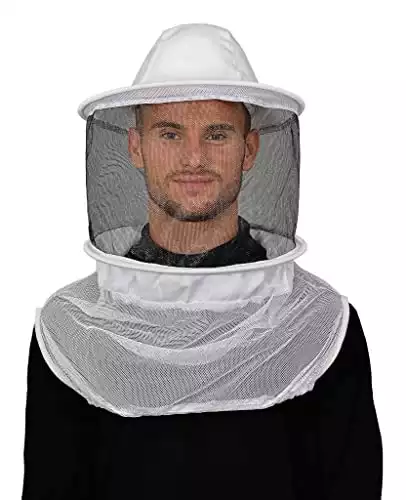


Great advice, easy to read and understand,
thank you.
I think I’m dealing with this issue now. Checked this hive twice and can’t find the queen. She was marked. Going to be warm today so will check one more time. If she’s not present, I’ll add a frame of young brood from another hive. It’s too early in the season to order an adult bred queen so this is my only option right now. See what happens!
I had a drone laying queen so I pinched her. I tried to raise an emergency queen (by introducing a frame) and did see 2 cells that emerged 3 weeks ago. I have yet to see a queen or eggs. I obtained a new queen and have her for now laying nicely in a split – Would it be safe at this point to merge with the queenless hive? I am still worried there could be a virgin queen in there.
The article says it will take about a month for a newly hatched queen to start laying eggs. Wait another week before introducing your bought queen or you may cause unnecessary harm. If nothing good is happening after a month (one more week) then you can safely introduce your bought queen.
Seven days ago we attempted to mark our queen. My husband had been at me to do it but I don’t like touching queens in case I damage them. We attempted to put her in a marking tool and my husband closed the cognate on her neck. We opened it quickly and she fell out onto the top bars on her back and did not look healthy at all. She fell between the frames and we closed the hive. We didn’t actually see her die. We inspected 7 days later and couldn’t find her. There was larvae in the frames and a lot of empty shiny cells not what we had seen the last time, thousands of eggs. I thought I saw half a dozen eggs. We looked through the frames again and couldn’t find the queen. We took a chance and put an caged queen in the hive. Have we sent her to the gallows because we couldn’t confirm the queens presence. Is it possible she died 3 days ago. There were some queen cups but they were all empty, I’d opened them, no eggs. I’m really concerned we may have put a new queen in with a defective one. What are the chances?
Thank you for the good information. My was making no honey and not building much wax. Someone suggested killing the Queen. I believed I got another poor queen. I’ve no brought a new queen. She is almost dug out. My queen less hive is a little different . There is a good number of bees. There aggressive. There is no brood. No capped honey and no capped pollen. I see no sign of desease. It is As if they have been queenless long enough to lose their work ethic. I’ll shake the hive out and pack it up if this does not work. I probably should have done this a month ago ( your advice as beyond repair)
We found a small swarm from our hive a week ago put them in the deep box with one frame of small brood and two of comb and one with a little honey. The deep next to it we found had no queen , we think this was our new swarm , why did she leave with a small swarm and the others did not go ? And now they are queenless. What do we do ? There was no brood no honey and allmost no pulled comb , help?!